INDIGENOUS BUSINESS AUSTRALIA




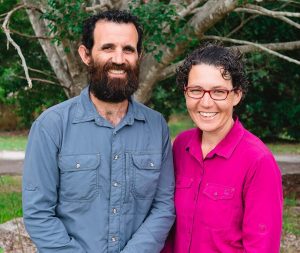
When Adam Wooding, a proud Yorta Yorta man, and his wife Carmel reached out to IBA, they were ready to bring their new business idea to life. After participating in the Accelerate with IBA program, they decided to take a completely different road and created something better than they first imagined.
Accelerate with IBA is designed for Indigenous entrepreneurs to take their business to next level. It combines formal training and practical skills development with highly respected advisors and connected mentors to transform businesses into the most effective version it can be.
Adam and Carmel are the owners of Empower Digital, a business specialising in e-commerce on the Shopify platform. Adam & Carmel's key focus is empowering small and micro businesses to take control of their digital presence by giving them the skills to build and manage their online stores.
When they signed up for the program in 2019, they were in the early stages of planning their first business venture. They came into the program planning to build an app, but after the first week of workshops, they discovered there might be a better direction to go in.
All participants were faced with some challenging questions that got them thinking about what was at the core of what they wanted their business to be and what they wanted to achieve.
Challenged to think about the bigger picture, Adam and Carmel realised that their business idea wasn’t aligning with their end goal and their values, so they took this as an opportunity to pivot in a different direction.
“We went into this thinking ‘we know this is the right business, this is what we’re doing’ and but it turns out it wasn’t, and that was a challenge.”
“We thought that changing our business idea to something completely different might be a problem, but our mentors were really supportive. They said, ‘if this is what is right for your business, then go for it.’”
“So, we put in the extra hours to get back on track with the program and created a business idea that was true to our hearts,” said Adam.
“But adding to that, even though we’re now doing what we love, and it all worked out, I think it’s important for future participants to know that the process was confronting. It’s uncomfortable to question your business idea, but in doing so, you’ll create something more aligned with your values,” Carmel added.
Adam and Carmel say that Accelerate with IBA gave them the confidence they needed and that their business is thriving since finishing the program.
“IBA customised the program to each participant, so we were able to focus our individual needs, which was really valuable.”
“One of the most valuable things we took away from the program was the networks that we made. We became really close with everyone else in the program. We still all catch up regularly to yarn about our businesses and share ideas.”
“That also gave us the confidence to network beyond that. One of the reasons our business has done so well is that now, we are confident enough to go to networking events and talk about our business. We’re not doubting ourselves, or who are or what we do.”
Since the program, Empower Digital have continued their relationship with IBA. They’ve accessed a busines start-up loan, participated in several business skills workshops and grown their network with other IBA customers.
Empower Digital has now moved on to a new phase of their business after experiencing substantial growth over the past year.
“We’re now able to be selective in the work that we take on, we’ve found that balance of having enough work that we can only take on jobs that are true to the service that we offer. We’re doing things that really excite us.”
When asked if they’d recommend Accelerate with IBA to other Indigenous entrepreneurs considering it, Carmel had no hesitation saying, “do it! We are huge advocates of the program. Don’t question whether you are good enough. If you want your business to happen… it’s just worth doing.”
Are you tuning in to the Black Magic Woman Podcast Series?
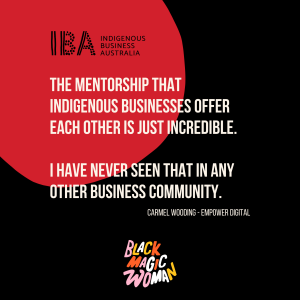 Adam and Carmel recently had a yarn with Mundanara Bayles on the Black Magic Woman podcast as part of our partnership series based on a variety of topics including housing, business, youth, women, investing, financial literacy, economic development and COVID-19 recovery.
Adam and Carmel recently had a yarn with Mundanara Bayles on the Black Magic Woman podcast as part of our partnership series based on a variety of topics including housing, business, youth, women, investing, financial literacy, economic development and COVID-19 recovery.
Listen to the podcast episode here.
Applying for home loan can be a daunting prospect at the best of times, but particularly so for Aboriginal and Torres Strait Islander people, who remain among Australia’s most financially vulnerable people.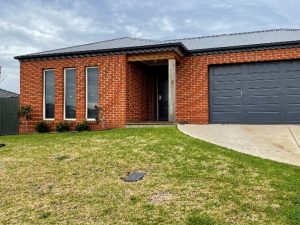
This disparity is part of the reason why IBA was created. We’ve been helping Aboriginal and Torres Strait Islander people with loans and financial services since 1990, assisting with lending so Indigenous Australians can enjoy economic freedom and own their own homes.
Earlier this year, IBA partnered with like-minded banks to help customers transition to and access the benefits of mainstream finance. Jodie, a proud Gunditjmara woman, refinanced her loan in March 2021 to one of the panel members.
Jodie lived in Warrnambool her whole life, and bought her first home with her partner and three kids two years ago after receiving a home loan from IBA.
“It was a really brilliant start,” explains Jodie. “We wouldn’t have been able to own our own home without their support. When you’ve got children, it’s really hard to save that 20% deposit.”
Through IBA, Jodie was able to get a loan for a house with a lower deposit required.
“With IBA, they are there to get you started into home ownership when you might not be able to access finance from a mainstream bank,” Jodie says. “Once you’re ready to refinance with another bank, the money from your loan can help finance another Indigenous person’s loan.”
Jodie spoke to IBA about refinancing options, and they suggested she get in touch with one of the partners on IBA’s new banking panel that were chosen due to the aligned values.
Since refinancing, Jodie has been thrilled with the level of service she’s received and the supportive process involved.
Jodie said, “There were times that I wasn’t very well and it was hard to remember what we needed to do, but (one of the banking partners) was always there helping us through emails and phone calls. She was never pushy or impatient; we feel so lucky to have had her support.”
Since making the transition, Jodie’s loan repayments have significantly reduced and the extra money has allowed her to buy a caravan.
“Having a caravan means we go on more holidays and spend more time together as a family,” Jodie says. “The kids (aged 15, 17 and 19) have got their own tents, and it’s really increased the bond we have, being able to spend time together without having that financial pressure.”
After refinancing, Jodie has continued to have contact from their banking partner to see how they’re getting on. “It’s so daunting buying a house and having a loan,” Jodie says, “but having the support from (one of the banking partners) is really comforting and eases any worries you may have.”
Find out more about IBA's banking partnerships.
The thought of owning a stable home for a blended family of seven seemed like a distant dream for Palawa couple Brianna and James. That was until a family member introduced them to IBA.

With their goal in mind and the support of IBA, they started their journey to home ownership. Now they are proof that anything is possible with the right plan.
When Brianna left her previous relationship, she ended up with mountains of debt and a bad credit rating. James had owned a home in the past, but the couple thought owning a home together was out of reach.
After hearing about IBA, they took the first step in their home ownership journey. They jumped onto the IBA website to start exploring the requirements. They were able to identify what areas they needed to improve on before applying for a home loan and worked out achievable steps to get there.
Brianna and James attended IBA’s workshops on budgeting and preparing for home ownership which encouraged them to create a two-year plan. Cutting their expenses and sticking to a budget were top priorities. They also started paying down their smaller debts and then moved on to tackling their bigger debts.
“We buckled down and started saving money and cutting costs everywhere we could,” says Brianna.
“We would call our utility providers regularly to make sure we were getting the best rate. We’d do up and sell old furniture; wherever we could make or save money we would.”
After two years of getting their finances back on track, their dream of owning their own home was becoming a reality, and they reached back out to IBA and applied for a home loan.
“The day we were approved, we found the perfect block of land. We rang the agent to enquire the next day and we bought. Everything just fell into place perfectly.”
Brianna says that cutting costs and living on a strict budget has all been worth it.
“Owning our own home brings a new chapter. It provides a stable roof over our kids’ heads and somewhere they know they can always call home. It also teaches them that anything is possible if you put your mind to it,” says Brianna.
“With everything that has happened in our past, we never thought this would be possible. We thought we’d be renting for the next six years. We wouldn’t be here without the help of IBA.”
June couldn’t come quick enough for the family of seven as they get the keys to their brand new, freshly built home that has room for the whole family.
Find out more about IBA’s regional construction loan package to build your perfect family home like Brianna and James did!
Keep an eye out on our website for our upcoming home ownership workshops, (info session, budgeting and understanding credit) and register to find out more.
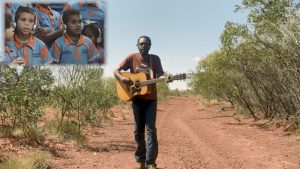
A singing collaboration in the Northern Territory has shown how music can unify communities.
The Barkly Voices Project, sponsored by Indigenous Business Australia (IBA)’s subsidiary IBA Retail Asset Management (IRAM), saw 160 schoolchildren, Traditional Owners and community members from the Barkly Region contribute their voices.
The resulting four and a half-minute video clip of ‘Keep My Culture Strong’ was released today.
The Barkly Voices Project arranged and remixed a song composed and recorded by Barkly musician Brian Morton and Australian musician and songwriter Neil Murray.
“We wanted to show the Barkly Region in a positive light,” says Julianne Croft, a musician and artistic director who coordinated the project via her role at Barkly Regional Arts.
The idea for the online singing collaboration came from IRAM CEO John Kop during COVID-19 lockdowns after seeing the diverse virtual choirs popping up around the world. He arranged sponsorship from IRAM, a subsidiary of IBA, which manages the Tennant Creek supermarket.
Barkly Voices participants were invited to use their smart phones to simultaneously listen to Brian Morton’s backing track and record audio-visual files, which were posted on an interactive website for editing. This was balanced by participants recorded either on site or at the Winanjjikari Music Centre studio at Barkly Regional Arts.
Four schools took part in the collaboration including Tennant Creek Primary School, the Munkarta Homelands, Murray Downs (Imangarra) Primary School and Elliott Public School (with singer Ray Dimakarri Dixon). Other organisations contributing their voices included Catholic Care, Nyinkka Nyunyu Art and Culture Centre and Papulu Apparr-Kari Language Centre.
“The kids were great,” says Julianne Croft. “It was a really positive experience for them.”
Sean Armistead, Executive Director of Government & Public Relations at IBA, notes that contributing to local Indigenous communities for positive economic outcomes is core to IBA’s purpose.
“Projects like the Barkly Voices shine a positive light on Australia’s Indigenous culture – and something we should all be proud to promote.
“The theme of Reconciliation Week 2021 is ‘More than a word, reconciliation takes action’ and this video shows what action can look like.”
Barkly Regional Arts also receives sponsorship from the Northern Territory and Australian Governments.
Media contact: Tara Toohill 0427 011 938 or tara.toohill@iba.gov.au
Sitting by the firelight,
The moon is shining bright.
Listening to all the people
Telling the Dream Time story.
I’m thinking very deeply,
About that dreaming.
How it is the backbone to this land.
Keep my culture strong.
Keep my culture strong.
Culture is the main thing.
It’s our identity and meaning.
It’s the way to survive.
We can’t forget our ancestors.
We gotta keep it all alive,
And pass it on to our children.
Keep my culture strong.
Keep my culture strong.
Keep my culture strong.
And carry on.
[Bridge] (spoken in different First Nations’ languages and Chinese, Indonesian and French languages of Barkly singers: “Keep our culture strong, keep our children strong, keep our country strong”)
Well, I’m standing in my country.
I feel the power in the ground.
It’s what the old people said.
When my time is done and I no longer walk this earth,
My spirit will return to the place I love.
Keep my culture strong.
Keep my culture strong.
Keep my culture strong.
And carry on.
Keep my culture strong.
Keep my culture strong.
Keep my culture strong.
And carry on.
When COVID-19 hit, it stopped Scott and Debra’s South Australian transport company, Karma Trucking, in its tracks. Business came to a standstill, but the bills didn’t.
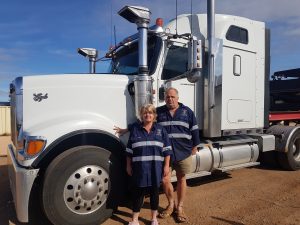
Debra and Scott have been in the transport industry for over 30 years and this has come with its fair share of challenges. When COVID-19 brought on strict boarder restrictions, their industry was heavily affected.
Debra explained how the ripple effect of COVID-19 left their business in doubt, “Businesses were closing down so they weren’t ordering stock and ships stopped coming in. There was nothing for us to transport.”
“We went from transporting five days a week to a couple of days a week and before we knew it things shut down completely. We were out of work for about eight weeks. Meanwhile we had bills coming in.”
“Although we weren’t working, we still had to be paying insurance for both the business and the prime mover, as well as the vehicle registration. We had to keep paying the bills so that we were ready at the drop of a hat for when jobs did start coming in. We didn’t know how we were going to keep our business from going under.”
Debra and Scott were battling a tough time as business owners. The long-time IBA homes customers thought they’d reach out to IBA to see what support they could get for the business.
“We were actually applying for a small personal loan when our relationships manager at IBA told us about the COVID-19 Business Relief Package. The support we’ve received has just been fantastic.”
“Being able to get on top of outstanding bills and creditors with the package has meant we have been able to also finalise the last payments on our prime mover. It took a weight off our shoulders to have the vehicle as an asset now and not a liability. We’ve been able to get on top of our payments and it’s provided us with some security. We can’t thank IBA enough.”
When asked what advice she would give to other business owners who may be struggling Debra said, “What’s gotten us through hard times is staying in contact. When bills are piling up, pick up the phone and call the provider, let them know your situation and come to an agreement. Don’t give up and put your head in the sand.”
IBA is committed to helping Indigenous businesses impacted by COVID-19. Read more about our COVID-19 Business Relief Package. If you need business assistance, reach out to your IBA relationship manager or register your interest today.
Kristy and Walter have something to celebrate and we’re proud to celebrate with them too. The couple entered home ownership back in 2014-15 through the assistance of a home loan through IBA. Now, thanks to a new approach from IBA, they have successfully refinanced their IBA loan and are realising the benefits of a mainstream home loan, achieving savings each month on their loan repayments.

“IBA has partnered with like-minded lenders to provide a pathway for our existing borrowers who are considering refinancing their home loan. Our banking partners are committed to continue to provide support to borrowers through building strong and respectful relationships with Aboriginal and Torres Strait Islander people, communities and businesses,” Kirsty Moore, IBA’s Executive Director Products and Markets explains.
At IBA, not only do we rejoice in our customers successfully obtaining a home loan, we also celebrate our customers who are able to go on and refinance to a mainstream lender. Kristy and Walter are one such couple and wanted to share their story with others who may be considering a change.
Their journey started seven years ago.
“We were renting together and paying off someone else’s (mortgage),” says Walter. “All that money for something that would never be ours.”
They were focused on getting their own home, however with limited deposit they struggled to get a home loan from a mainstream lender.
Around this time, Walter’s cousin had recently been approved a home loan through IBA and recommended they should ring IBA for a yarn.
“The deposit was much lower than a mainstream bank, and we didn’t have to pay LMI (Lenders Mortgage Insurance).” says Kristy. “It was an awesome hand up.”
They were approved for a split home loan with IBA and another bank, and moved into their family home in 2015. Their plan was to refinance the IBA loan as soon as they were able to.
IBA offers a discounted commencing interest rate to eligible customers which gradually increases each year until it reaches the IBA Home Loan Rate.
“IBA was a foot in the door for us, but we wanted to refinance and free up money so someone else could have the awesome opportunity with IBA that we had,” they agree.
Due to a downturn in property prices in Townsville, refinancing and transitioning 100% of their loan to their other lender was harder than expected. The couple found the process with their other bank to be complicated and lengthy. They were rejected for refinance despite having always met their loan repayments.
The experience was upsetting, and the couple didn’t know which way to turn. That was when Raelene from IBA called and let them know about the recently launched Banking Partnership arrangement where IBA has formed relationships with mainstream banks who are committed to supporting Aboriginal and Torres Strait Islander people in their home ownership journeys. Raelene provided them with contact details of each of the banking partners.
“My confidence had been shattered by the experience I’d had,” says Kristy. “We spoke to (one of the banking partners) and they took the time to understand where we’d been and how to help. They held our hand through the whole thing, let us call whenever we wanted.
It only took about four weeks before we were approved. It’s really changed our life.”
The savings that have resulted from their new rate has enabled Walter to make a career change and follow his dream to become a carpenter. The couple, along with their two young children, can continue to enjoy their family home with their new lender.
“We’ve worked really hard, and gone without plenty of times, to keep our house. Since the day we decided to buy, our house has been our number one financial priority,” Walter says. “Hopefully our sacrifices mean our kids won’t have to work as hard or sacrifice as much as we have.”
When a loan is refinanced, the funds are returned to IBA and re-used to enable new home loans to be provided to other Indigenous first home buyers. “It’s so good to know we’re not blocking the way for someone else,” Kristy says. “Another young family can now use IBA.”
Learn more about IBA's Banking Partnership.
We partnered with SBS to feature Aboriginal and Torres Strait Islander businesses throughout the month of April. This was the 2nd year of the partnership and we love showing the amazing work that our customers are doing.
The 2021 SBS Small Business Secrets segments included:
Check out all the segments on our YouTube channel playlist:
The 2020 playlist is also available which featured Warida Wholistic Wellness, Bindam Mie, Liandra Swim and Banubanu Beach Retreat.
For Yorta Yorta woman Heidi, building her first home is more than choosing bricks and paint – it is providing stability and a positive future for her family to thrive.
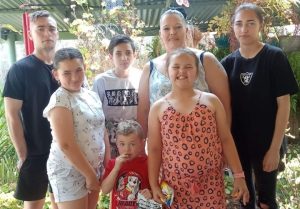
Heidi's journey to home ownership took a bumpy road. The single mother of six was battling dark times when she decided to take charge of her life and make a change.
"I had to turn my life around for my children. Life is too short. So, I got a job in Community Services and started saving."
Heidi wants to provide stability for the future generations of her mob – including her kids and grandkids.
"I thought, 'I'd really like to own my own home,' so when I pass away, my children have got something. It means everything to me to be able to give them that stability, safety and security for the future," Heidi reflected.
Heidi first heard about IBA from a work colleague. After completing her expression of interest form, she was able to get advice on how to prepare for home ownership and where she needed to improve before applying for a home loan.
"There were a few things on my credit rating that I needed to fix up, and IBA told me just to keep saving as much as I could."
"I started budgeting. I'm an artist and an author, so I saved all my money from that. Of course, I had to sacrifice some things, but it was worth it in the end."
Now, Heidi's years of moving around in rentals with her kids are coming to an end, as she settled on her new block of land on 22 January. "The kids are so excited. They keep saying 'Mum, when are we moving into the new house?' I'm so excited. It can't come quick enough for me," Heidi said.
Her new home is set to be built by July, but Heidi said it is worth the wait to build a perfectly suited home for her and her family.
"I decided to build because I can create a home that is exactly what I want. I can personalise it to what suits me. It'll be the colours that I like and the things that I want in my home."
"It's so exciting. My two youngest kids were also really excited to help me pick the new house."
When asked what advice she'd give to someone else interested in buying a home, Heidi said, "If you're determined to achieve something, you can achieve it," a motto that she has proven throughout her life.
Heidi was able to access the First Home Loan Deposit Scheme (FHLDS) through IBA with only a 5% deposit. This means if she wants to refinance to a mainstream lender in the future, the guarantee is portable to other participating lenders. With IBA and under the FHLDS, Heidi avoided the costly mortgage insurance and the minimum 20% deposit. Find out more about the First Home Loan Deposit Scheme.
Have you thought about building your own home? IBA received an equity injection from the Federal Government for new customers to construct homes in regional areas. Find out more.
On a beautiful day in Northern NSW, holiday makers are exploring the Tweed River at their leisure. Boyd’s Bay Houseboat Holidays help create this special experience for locals and tourists, with the hire of stylish houseboats accommodating up to 12 people.
Owner Greg Ebsworth is a proud Wangkumarra man from North West NSW and he and his partner Nathalie have faced challenges this year with inspiring resilience. For him, the COVID-19 pandemic has been just another storm to weather.
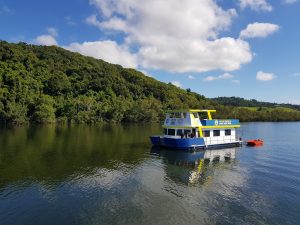
“Like many small businesses we’ve struggled a bit,” he says. “We were closed down for a few weeks from Easter. This had an incredible impact on our business - being shut down for so long with no income coming into the business and the uncertainty of when we would be able to be open to trade again.”
The fast-changing situation in Australia brought about a tumultuous year for business. After weeks of being unable to operate, Boyd’s Bay Houseboat Holidays opened in June and for the next two months, things were looking up. But border closures in late July brought about cancellations from customers unable to travel, causing more financial uncertainty.
IBA’s Business Relief package helped them stay afloat. “Luckily for us, IBA was there for support, offering us a business loan and grant to help ease the financial strains from the limited trade that was caused by the COVID- 19 pandemic,” Greg says.
“It really, really made the difference in us surviving these difficult times.”
Greg and Nathalie have been committed to the business since buying it in 2016, after 16 years away working and travelling the world as yacht captains.
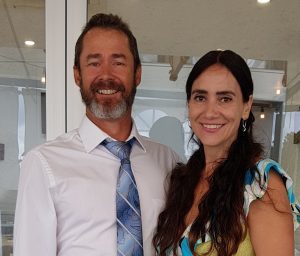
“It gave us a chance to have a real go at making something our own and building a future for our family,” he says.
“IBA have been very supportive… in the beginning with some business mentoring and accounting help and then right through the term of our loan, with our IBA contact constantly checking in with us, helping us and guiding us when needed.”
This isn’t the first challenge beyond their control. The 2018-19 drought had a negative impact on local tourism and having their loan restructured helped them continue. Then in December 2019, one of their boats was damaged by customers causing it to sink. This had a huge effect on their income, losing three months of bookings over the summer holiday period.
These ups and downs haven’t broken Greg’s spirits and he is positive about the coming months. Now that many domestic borders have opened, Greg expects the business to bounce back and the rest of the season to be plain sailing.
Read more about Boyd's Bay Houseboats.
Have you ever considered building your own home? With IBA’s recent $150 million Government equity injection, building your own home could be a reality.
For Bunyah man Beau and his wife Jess, building their first home was a dream come true. The couple was attracted to building for the freedom of creating a home that was perfectly suited to them.
“Jess and I decided to build our own home because we really wanted to make the house ours. We wanted to start from scratch and just decide how we wanted to set the foundations for our family in a way so it would be perfect for us,” says Beau.
In the Federal Government’s bid to boost construction and employment opportunities, IBA received a $150 million equity injection. The funds will help Aboriginal and Torres Strait Islander people to get into the housing market sooner, with fast-tracked home loan applications for customers who are wanting to build a home in a regional location and the loans have no application fees and low deposit requirement.
“Building your own, you can tell people ‘I built this, I designed this, we chose this, and this is how we wanted it, and this is our ideas come to life.’ This is our dreams on a slab of concrete. This is what we wanted. So, the house can grow with us when we grow our family.”
If you’ve ever considered building, now may be the perfect time.
To find out more about the application process, contact one of our friendly home loan consultants.